Slow
Conversations
Issue: On Technological Materiality
Issue: On Technological Materiality
Victoria Hertel is a Singapore-based German-Venezuelan artist whose practice explores the sensory entanglement of the self and non-self. Her immersive installations combine sensor technology, trace and motion to construct distilled sensory encounters that heighten our awareness of the material network we inhabit. Through the synaesthetic experience of these encounters, we are invited to expand our understanding of our coexistence in relation to everything within and around us.
Filed under: found objects, installations, painting, sculpture, technology

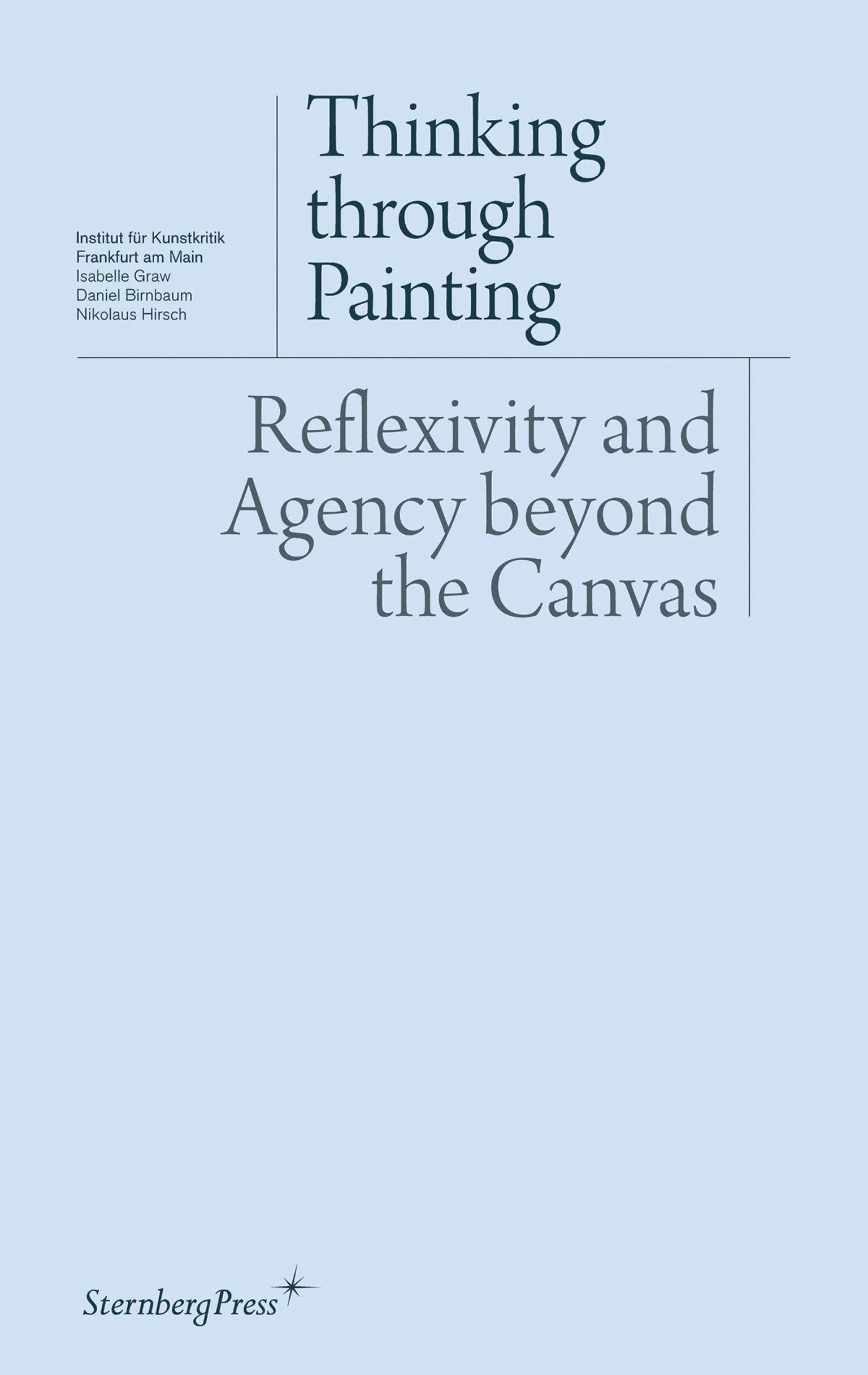
¹ Thinking through Painting: Reflexivity and Agency beyond the Canvas, ed. Daniel Birnbaum, Isabelle Graw and Nikolaus Hirsch
2012
Let’s start with a book that you picked out for this chat. Thinking through Painting: Reflexivity and Agency beyond the Canvas argues for the continued relevance of painting today in emphasising “the apparatus of its appearance and the conduits of its circulation”. How has this book informed the way you approach painting within your practice?
This was a changing text for me. I originally applied to the LASALLE MA Fine Arts Programme because I was really stuck in my practice, and I wanted to move out of the stretcher frame and into more spatial painting.
In the book, the authors argue for painting’s power of indexicality. Essentially a painting’s essence lies in the mark or the gesture that the artist transcribes onto the canvas. In my MA, I was searching for what was at the core of painting. Mark making is at the core of painting, because that gesture is the bridge between the viewer and the artist, which makes it especially powerful. When you stand in front of a painting, you are connected to something that happened either a week ago, or two hundred years ago. This idea of indexicality was really mind-blowing to me and I was struck by how this simple gesture holds so much meaning, energy, and connection. This led to my MA thesis, which explored traces as energy and materiality.
Mark making is at the core of painting, because that gesture is the bridge between the viewer and the artist, which makes it especially powerful.
² Spring, Victoria Hertel
2021, Installation view at LASALLE College of the Arts
2021, Installation view at LASALLE College of the Arts
Let’s expand on this notion of “spatial painting” or “dimensional painting”. In your earlier works primarily use black sumi ink as your key medium, and later you began to experiment with other materials such as cotton, calico, gum arabic. Tell us about your explorations with these materials.
Painting, for me, has always been about material experimentation. I wanted to see how I could create different haptics within the work. I always go into art supply shops randomly to buy different things so that I can mix them together and see what happens. When I was studying in Munich for a semester, a professor who taught a course on paint material told me that it was actually good that I had no clue about different chemicals in paint. This is because I wouldn’t know the limitations they have. Back then, I thought I would better understand how to create particular outcomes by taking courses on restoration. But because I was uninformed, I think it helped me to be more experimental — to try combining materials to achieve different forms, haptics, and textures in my paintings.
I enjoy the process of experimenting as well. When I was still painting, I would mix everything together and pour it onto a surface to see how things react with each other. That was perhaps when my approach began to shift from an object-oriented to a processual one. There are constant, energetic chemical and biological exchanges going on. Previously, my paintings were really colourful. Nobody believes me when I tell them this because no one has seen them. I realised that what was important to me was not the colour, but the haptics of the painting. This led me to switch the colour palette I use entirely to black, because it allows me to focus on all the other elements in the work. Black became the core, stable component in my work so that everything else may shift around it.
I realised that what was important to me was not the colour, but the haptics of the painting.
You need something that's constant in order to experiment. There is something quite scientific about that as well, a systematic approach to experimentation.
That consistency allows me to see if there is a black sheen now on the work, if there is craquelure, is it getting greyer, or is it starting to crumble apart? It allows me to focus on other things that are happening, as compared to creating a certain colour aesthetic.
In school, they used to call my space “the lab” because I use stainless steel equipment, chemical measurement flasks and beakers. I'm not always scientific in my studio, but I can be if I need to execute these ideas at a large scale. One example of this would be Short Circuit, a work I presented at Yeo Workshop where I had precise ratios to ensure I had each component exactly right. But usually my process is more like cooking — you know more or less how it works, but you're not going to measure it out precisely.
³
Short Circuit, Victoria Hertel
2021, Installation view at Yeo Workshop
2021, Installation view at Yeo Workshop

With your works Short Circuit and Spring, it seems that there was a shift away from sculptural painting towards an approach that pulls in the environment and occupies it spatially. Can you share your thought process behind this shift and how it came to be?
With the size of the space, I had to think about how the floor created an enveloping feeling. At the same time, the floor is still surface — it's like a canvas, and I think that was not enough for me. That's also why my recent works lean more towards technicality and spatiality.
For example, Bell was a work where I tried to make work that wasn’t placed on the walls and off the floors, but occupied the entire middle space of the room. That’s consistent with all the works that I do now. With Bell, I came across a rusty metal bell in the sand at East Coast Park. I was struck by its patina and its unique sound. I liked its presence as an object that went through processes of oxidation and corrosion, yet at its core, it still had an essence. I was playing around with it in the studio, tying it to a string and pulling at it. I realised I wanted to create this sound, but I wasn’t familiar with the technical aspects, so I had help with engineering a pulling mechanism that could activate the bell. I also didn't want it to just be activated all the time. I wanted there to be a connection with the audience. It was linked to an ultrasonic sensor which pulled the bell whenever somebody entered a 3-metre radius. I think that's what people found really cool to interact with because it wasn't something that was constantly moving. It only becomes activated through one’s presence.
That's why I like sensors — you are being sensed by a different entity, and at the same time you're also observing yourself sensing. It acts as a back-and-forth, which creates a bridge between our inner thoughts and everything that surrounds us.
Tell me about your use of found objects in your works, such as found camera lenses and metronome bells. What qualities did they bring to the work, and how did you repurpose them in your installations?
Patina is a major quality. It’s not something that you can recreate and it needs organic time to build up. My works also deal a lot with deceleration — to offer space and time for the grounding of the self. That’s why I like the idea of using found objects: something that already exists, and that has undergone its own kind of fermentation. These objects bring their own unique sounds, characteristics, timeline and history into the work, which I really like.
Each bell in Times was of the same type, but because their shapes were slightly different, they each have a unique sound quality that almost makes it sound like they're having a conversation with each other and with the people in the space. On the other hand, there’s also the environmental perspective. There are so many things around us, so it's nice to be able to work with something that was already there and re-present it. For example, the discarded lenses I used in Core were already mouldy. They would have been tossed out at some point, but using them in a work gives the objects an entirely new life, purpose or function, which I enjoy.
I like the idea of using found objects: something that already exists, and that has undergone its own kind of fermentation. These objects bring their own unique sounds, characteristics, timeline and history into the work, which I really like.
 ⁴ Quality of Wetness, Koji Enokura
⁴ Quality of Wetness, Koji Enokura 1974
This shares affinities with Quality of Wetness by Japanese artist Koji Enokura, an artwork you’ve picked. Ekonura is known as one of the leading practitioners of the Japanese art movement Mono-ha, or School of Things, which centered natural and industrial materials and their encounters with the environment. Their minimalist and often temporal propositions share affinities to your own artworks. Tell us more about the influence that this work has had on your practice.
What I learned from Mono-ha was a respect, awareness, and appreciation for presence, and that things have their own aura and energy. The way objects are placed play a huge part in how we perceive things. In Mono-ha, earth or stone is often used in combination with materials like steel plates or plastic foil. There’s a paradoxical coexistence between natural and manmade materials that I find quite interesting. I absorbed that into my practice, working with materials like stainless steel or brass but always in combination with more organic things like water, sumi ink, or sound. To me, it's about building a techno-organic system. I want to hit that sweet spot with technology such that it’s not too alienating, and that there's a kind of warmth.
At the same time I was looking at Enokura’s work, I was also looking at the work of Karla Black. Both artists work with a spatial painterliness. In Quality of Wetness, Enokura manages to do it in a very simple but effective, powerful, and complex way. The stain has so much depth to it, and has the power of time. It evokes something that has occurred here in this present moment, but persists into the future. In doing so, it combines different times into each other. I think that’s what traces are about. It’s a bridge, and you can feel the artist plotting the gesture in the artwork.
 ⁵ The Quick and the Dead, Peter Eleey and Peter Osborne
⁵ The Quick and the Dead, Peter Eleey and Peter Osborne2009
It reminds me of your work, Drop, which also uses water and evaporation to evoke process and time, but also relates to this idea of spatial painterliness.
At the time I made Drop, I was reading The Quick and the Dead, which discusses immaterial works and radioactivity. I was trying to figure out how I could create something that spans time, and to create something that disappears but there's a shadow trace that still remains. With Drop, a pendulum moves across the space which constantly releases water drops. In that way, the dampest areas are closest to the contemporary moment, whereas those which are slowly evaporating away are a little in the past. The space that the work was installed in had a concrete floor, so many of the traces remained even after the work was de-installed.
Randomness, in the work, was important to me, because it creates unpredictability. When something's looped at specific intervals, I don't think our attention is captured as much because we know what's going to happen. But if it is random, you're always waiting in anticipation for something in the future. Where is it going to drop, where is it going to swing, and what's the next mark going to be?
With chance and randomness, I wonder whether it is ever possible to create randomness within controlled systems, especially when you’re working with technology that has certain limitations or boundaries. How do you create openings of variance, play and chance in your artworks?
For Drop, randomness came from the coding. It worked on an x-y coordinate system which was set to randomly pick the codes that directed its movement across space. It’s organised within a framework, but you can’t predict what the next code would be. Sometimes the pendulum would swing slowly, in perhaps a 10cm radius; and at other times it would go full swing at 2.5 or 3 metres.
With other works, this may be seen in my use of sensors. The randomness comes from how the sensors interact with people, because each person will interact with it in a very different way. For example, in Times, you would hear different sounds depending on how you interact with the work, how quickly you were moving in it, or how many people were in the same space. In most of my sensor-based artworks, the randomness comes from people and their interactions.
⁶ Drop, Victoria Hertel
2022, Installation view at Starch
⁷ Drop, Victoria Hertel
2022, Installation view at Starch
2022, Installation view at Starch
⁷ Drop, Victoria Hertel
2022, Installation view at Starch

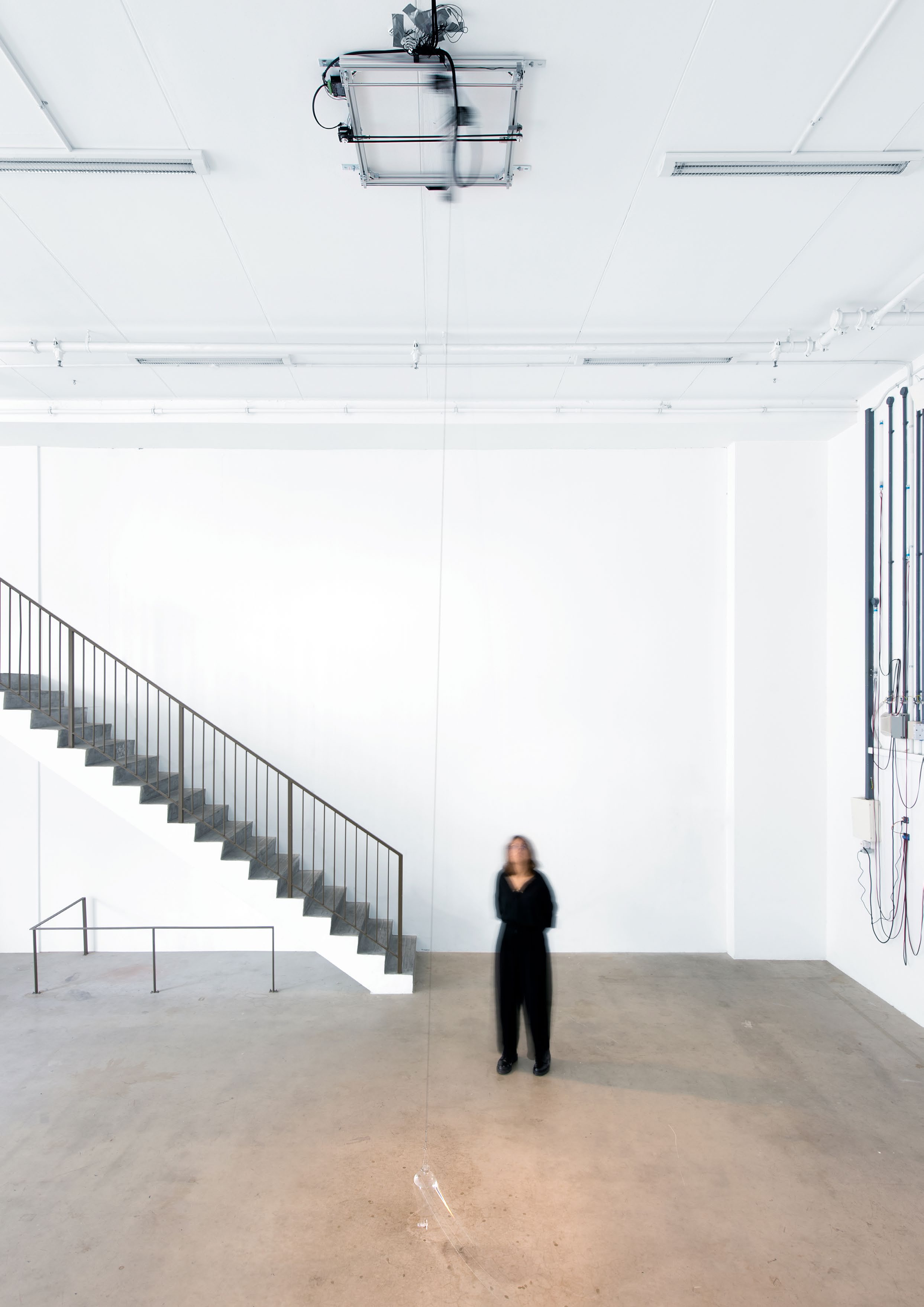
Related to this is the idea of “error”. How do you consider error and unintended outcomes in your work? What are some accidental discoveries you’ve had in the process of your art-making, and what have they brought to your work?
Error is something that's unexpected, something that perhaps you didn't calculate. In that sense, it also figures into the component of randomness. In my works, I have an idea for the installation or setup, but often things happen which are out of control or completely random. Some might treat these occurences as errors, troubleshooting or solving these issues so that it does not deviate from the intended outcome. Instead, I try to embrace what's happening as part of organic shifts in the process. Sometimes unexpected things emerge out of that process, and the work gains a different depth as a result.
One example of this was with the stainless steel wire in Bell. The force of the actuator, together with the people interacting with it, was actually so strong that it was constantly ripping or tearing the stainless steel wire apart. I had to come in two to three times a week to replace that stainless steel wire. Every time I replaced it, I tried to curl the wire the same way so that it would make a specific sound. However, each wire has a slightly different length and bend so the effect could never be the same as the original. We have to embrace the fact that materials have their own way of functioning and their own characteristics. That was when I also learnt that I cannot make the exact same work twice. The bell sounded very different every time I presented the work. I have learnt to embrace all of these different variations.
Another example was in Times. I had wanted to melt the brass from the optical lenses and cast them into bells. However when we tried to do that, the metal was so contaminated that it just clumped together and wouldn’t take shape. I had to adapt and pivot to using found metronome bells. I’ve learnt to not get too hung up on an idea, and to embrace it when things go differently.
We have to embrace the fact that materials have their own way of functioning and their own characteristics.
⁸ Bell, Victoria Hertel
2021, Installation view at LASALLE College of the Arts
⁹ Bell, Victoria Hertel
2021, Installation view at LASALLE College of the Arts
2021, Installation view at LASALLE College of the Arts
⁹ Bell, Victoria Hertel
2021, Installation view at LASALLE College of the Arts

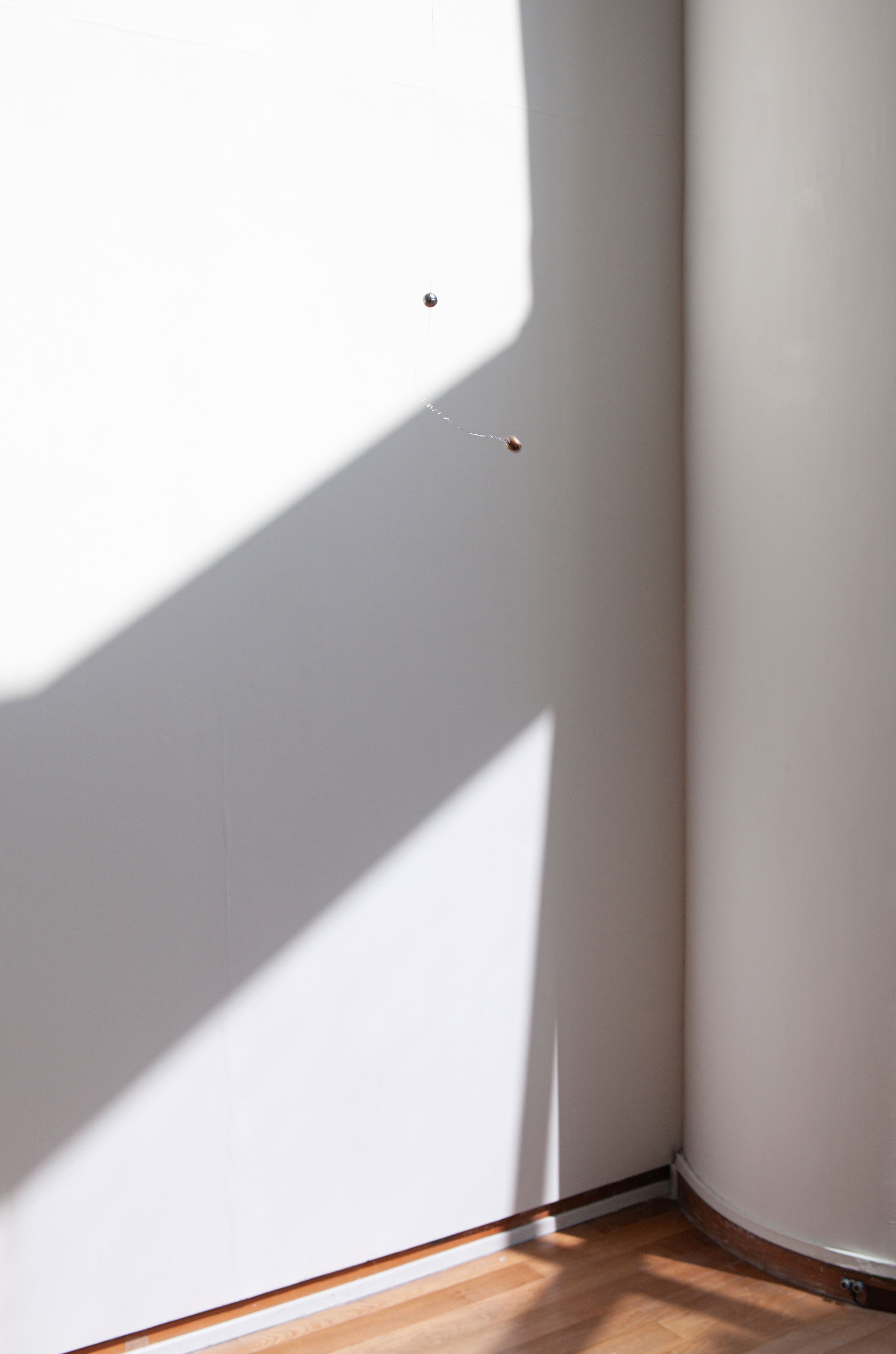
A lot of your work seems to be developed quite analytically, in the sense that you are testing and prototyping to achieve certain outcomes, but at the same time you work quite intuitively to adapt and adjust to what emerges.
I’ve intuitively come to know when I can keep pushing for something to happen, and when the system that I'm constructing is not made for that kind of push. I adapt to the work, and sometimes the work adapts to me.
A comment that stuck with me from one of my BFA professors was, “If you know exactly how a work is going to look at the end, then you might as well not do it.” There's nothing that you can learn from the process of creating: you're not leaving any space for things to develop on their own, and for you to learn and shift. I think that's a huge part of the work. It's a lot of adapting, shifting, and seeing.
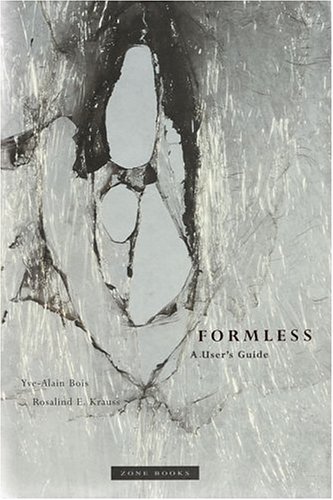
¹⁰ Formless: A User’s Guide, Yve-Alain Bois and Rosalind E. Krauss
2000
Another reference you picked out for this conversation was Formless: A User’s Guide. Tackling Georges Bataille’s idea of the “formless”, Yve-Alain Bois and Rosalind Krauss analyse the power and persistence of this notion in relation to art history. How does your understanding of this text, especially around ideas of form, meaning and content, shape your practice?
There were two core ideas that stuck with me from this book. If you imagine normality as a circle, then you have the extraordinary and the beautiful at the top, and the abject and the abnormal at the bottom of the circle. But both of them are outside of what we understand as normal, so they're actually on a level plane. The beautiful and the abject, at their core, are the same, because they are outliers. That’s why I also like paradoxes. You have these unfitting elements that form a kind of unity. Maybe also because I am a kind of cultural paradox, with my German and South American sides being very different. I feel that in myself and in my life — I'm always trying to make peace with paradoxes. In my artworks, I try to do the same thing by bringing different elements together to see how they can communicate or connect with one another.
The second was the idea of the formless as something that exists but doesn't manifest and materialise in a specific way. For example, evaporation, as a process where materials transition to a different state, or with sound in my works that is present for a moment and then it's gone. It’s a process where materials come together for a moment, and then they dissolve again, moving in and out of space.
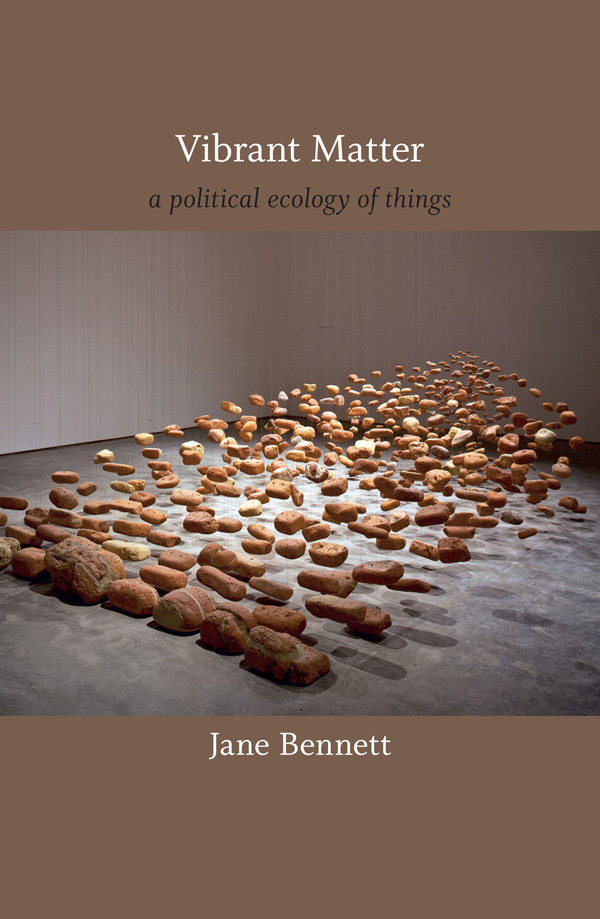 ¹¹ Vibrant Matter: A Political Ecology of Things, Jane Bennett
¹¹ Vibrant Matter: A Political Ecology of Things, Jane Bennett 2010
Perhaps a related idea is Jane Bennett’s concept of vital materiality in Vibrant Matter: A Political Ecology of Things. For me, vital materiality shifts the focus to the potential agency of things and objects, away from thinking of them as having stable and passive properties, and emphasising that everything is under a constant process of transformation within a network of inter-actions, inter-dependencies and inter-connections. Tell us what this means to you.
Besides Formless, Vibrant Matter was the other book that completely changed how I think about my work. Specifically, I remember a chapter on electricity where a network overload causes a blackout. It questioned who blame should be assigned to, and it discusses how either everyone is to blame, or no one is to blame. All the different participants in the network, not just the human participants, but even the electricity, were being described as a force with agency.
It made me think differently about the elements that I have in my work. I don't want to anthropomorphise the elements I'm working with, but electricity truly is a fickle thing. I've learned to see that I can't impose certain things on the materials I work with, and I have to work with how they function. It also shifted my thinking away from anthropocentrism towards considering how everything has its own dynamism and agency within a meshwork where everything adapts and shifts together. It also links back to Mono-ha with a respect and awareness for things other than ourselves, and that's what I really like.
If you become more aware of all of these different participants that make up an ecosystem, you start to focus less on yourself and become more connected.
 ¹² Global Cooling Lamp, Olafur Eliasson
¹² Global Cooling Lamp, Olafur Eliasson 2006
The last object you picked was Olafur Eliasson’s Global Cooling Lamp. Eliasson’s works are often concerned with climate change, and also manipulate elements like light, water and temperature. What was it about this work that spoke to you?
I started studying Eliasson’s work more extensively at the end of my MA in connection to environmentalism and the senses, but my experience of Global Cooling Lamp was years before any of that. In 2015 I was visiting an art fair, and while I don’t remember most of the works there, I do remember this lamp. I stuck my head inside the lamp, and it portalled me somewhere else. You're in the work, and all of a sudden the fair disappears. There are these micro-reflections and neon lights, and I thought it was amazing that I was able to enter an entirely different space just byinteracting with that work.
That's why that work stuck so much with me. It is entirely different from all my investigations that came later, but it left a mark on me. I've never seen that work again, but I can vividly remember the experience of it. I think that's why the idea of people entering the space, connecting with a work, and having an experience with it became really important to me.
When it comes to creating sensations and emotions for the viewer, what are some of the considerations you have?
I try to think about how people will move through and feel in the space. I think that's why other sensory components are becoming more and more important to me. If you think about how we experience the world, even in this moment, you have all of these sounds, you have the breeze of the wind on your skin, you have the taste of coffee, and all of these different sensory elements that play into your experience of this particular moment.
When we go into a gallery space (and this is not a critique of purely visual artworks), often we are expected to leave all of our senses, aside from the visual, at the door. Our experience of art then becomes very visual and cerebral. I wanted my work to be more visceral — for viewers to have an immediate experience that unfolds as soon as they enter the space.
That is why I’m exploring the auditory and the olfactory on top of the visual components in my way. I try to distill all of this so as to avoid sensory overload, which tends to result in an overwhelming numbness. I try to measure everything I’m bringing into a single work — how visual is the work, how much aural elements feature in it, and so on — so you can feel the installation.
If you think about how we experience the world, even in this moment, you have all of these sounds, you have the breeze of the wind on your skin, you have the taste of coffee, and all of these different sensory elements that play into your experience of this particular moment.
¹³ Times, Victoria Hertel 2023, Installation view at Objectifs Centre for Photography and Film
¹⁴ Times, Victoria Hertel 2023, Installation view at Objectifs Centre for Photography and Film
¹⁴ Times, Victoria Hertel 2023, Installation view at Objectifs Centre for Photography and Film
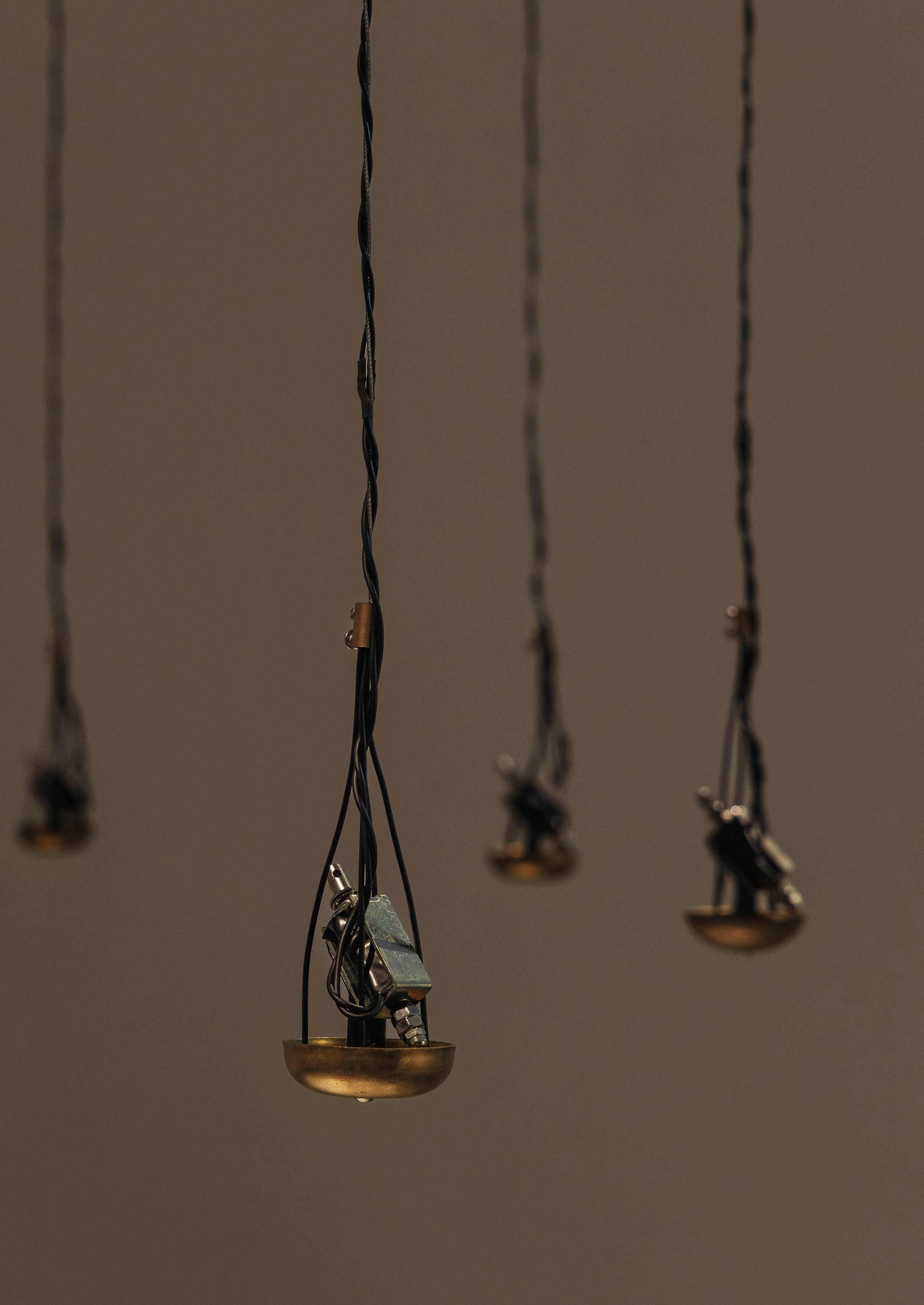
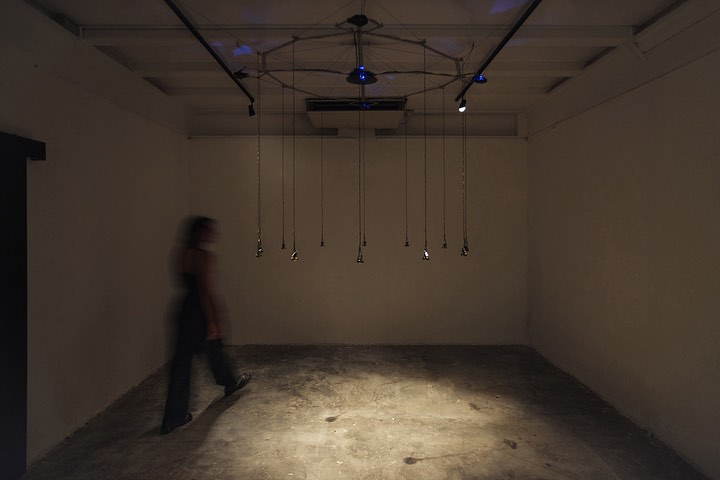
A distillation of what you’re trying to convey definitely takes some testing to achieve. At the same time, how do you consider the subjectivity of individual experiences, as opposed to a universal experience you want to arrive at?
Everyone who comes into an exhibition space will definitely experience the artworks on display very differently. For example with smell, everyone has different reactions to the smell of coffee. One’s life experiences and associations feed into their experience of the work, and that's not something that I can control. Some people are going to love it, hate it, or feel neutral. I don't think you can create universality because people are so subjective. But perhaps in my attempt to balance the paradox, I try to open up a space where people can insert themselves. If I take up that entire space by myself, it's difficult to leave room for the experiences of others.
I've often received comments that say there's nothing personal about myself in my work, and that lack creates a distance with my own experiences. It’s something that I’ve been thinking about. It’s true that my work does not draw directly from a personal narrative. At the same time, I do see parts of myself in my works. Everyone on my father’s side worked in engineering, and my mother’s side of the family works primarily in creative fields such as architecture. As such, I work with tech and spatiality. My dad has a stainless steel company, and so I have this connection to stainless steel. I also got into a car accident when I was nine, which caused hip damage and made moving around really difficult for me. This is something that I still carry with me. I'm always very aware of my body as a result, and so I am aware of how people move in the spaces of my exhibition as well. I think my works take the form of personal connections, but of course not everyone knows my background.
You often work with collaborators such as engineers, data scientists and fabricators to develop your artworks as well. Tell us about how you approach collaboration. How does it influence your creative decisions when refining the presentation and how you visualise your works?
The first thing that I had to learn when collaborating with people, especially across disciplines, is the importance of communication. Just because I think that what I said was succinct and clear doesn't mean it's going to be received in that way. You have to try to understand, for example, how an engineer’s mind perceives things and adapt accordingly. In Scent, I tried to keep things open so that the data engineer also had room to experiment and provide input. I also questioned how much of the process is trial and error, and how much I should interfere with the process.
The visuals the data engineer initially built didn’t work for what I wanted in the work. It was too figurative, and too visually cluttered. I had to consider how much space one could leave for experimentation, but how much was needed to actually convey the message that I had. It’s a process of moving back-and-forth between these points until you find the sweet spot, but it can definitely be a challenge. It all depends on who you work with and if they’re on the same wavelength.
I don’t have a background in technology, so I don’t know the boundaries of what can or cannot be done. One interesting thing about working with engineers is that we can work together to push past both our boundaries, creating something we both didn’t think was possible before we came together. Not knowing the limitations of something allows me to try working past them.
¹⁵ Scent, Victoria Hertel
2022, Installation view at Art Outreach
2022, Installation view at Art Outreach


